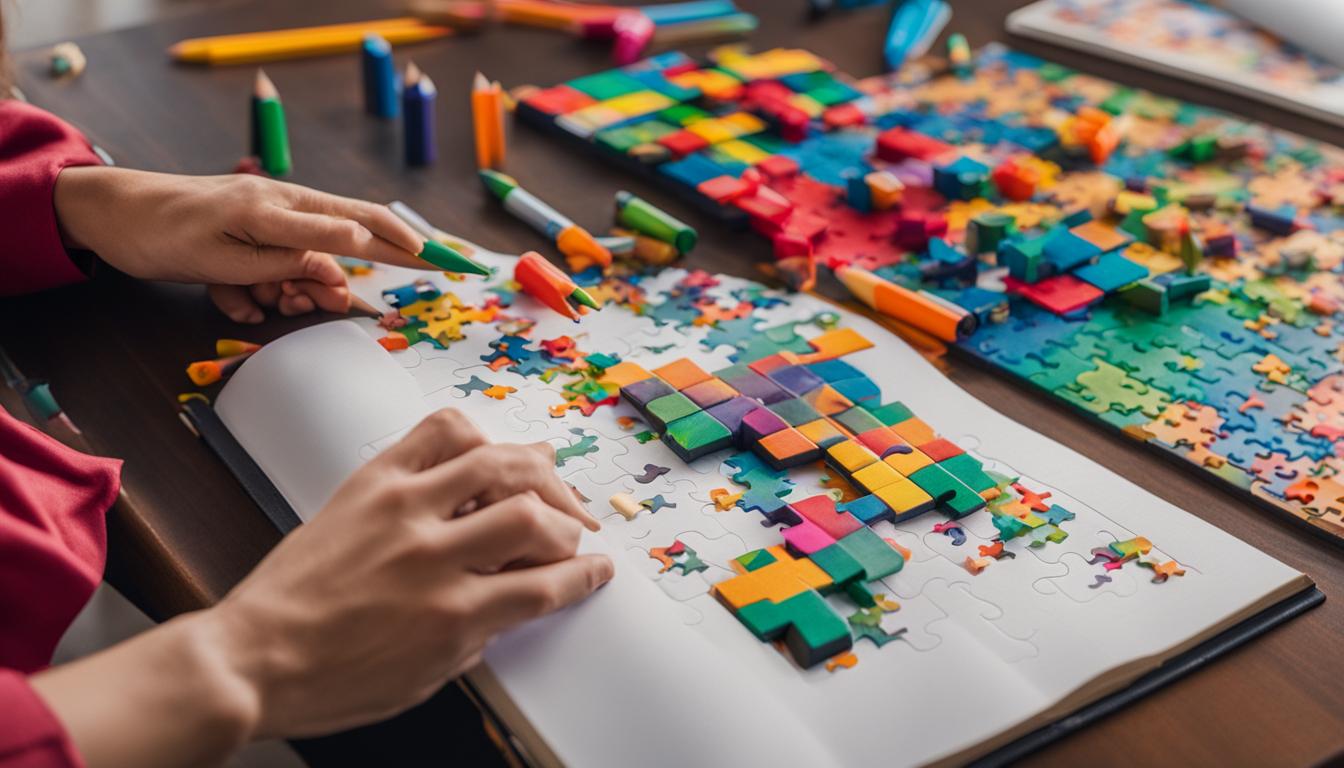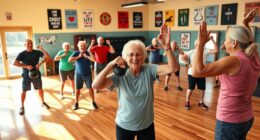It is interesting to note that about 80% of people who suffer from a stroke in the cerebellum have difficulties regaining full motor function. Recognizing the challenges of recovering from a cerebellum stroke is crucial for improving outcomes for survivors.
By exploring the intricacies of rehabilitation strategies, treatment options, and the timeline of progress, we can uncover the path to restoring function and independence post-stroke.
Key Takeaways
- Tailored therapy crucial for optimal recovery outcomes.
- Specialized therapies aid in relearning skills post cerebellum stroke.
- Specialist evaluations for vision changes are essential in recovery.
- Consistent home therapy vital for sustained progress and long-term gains.
Common Challenges in Recovery
When addressing the common challenges in recovery from a cerebellum stroke, cognitive affective syndrome, memory impairments, and speech problems emerge as significant obstacles that individuals may encounter.
Cognitive affective syndrome presents as a combination of cognitive and emotional dysfunctions, making it challenging for stroke survivors to navigate daily tasks effectively. Memory impairments further exacerbate this struggle, impacting the ability to retain new information or recall past events. Speech problems often manifest as dysarthria or aphasia, hindering communication and social interactions.
Additionally, coordination impairments, balance problems, proprioception difficulties, ataxia, nystagmus, dysphagia, and muscle weakness can significantly impede recovery progress.
Addressing these challenges requires a comprehensive approach that encompasses physical, cognitive, and emotional aspects of rehabilitation. Understanding the interplay between these symptoms is crucial in developing tailored strategies to improve outcomes for individuals recovering from cerebellum strokes. By targeting these specific obstacles through specialized therapies and interventions, individuals can work towards regaining independence and enhancing their quality of life.
Rehabilitation Strategies for Improvement

Rehabilitation strategies for improvement post-cerebellum stroke encompass tailored programs targeting mobility, balance, and muscle strength to enhance recovery outcomes. When designing rehabilitation programs for cerebellum stroke survivors, it's crucial to consider the individual's specific needs and challenges.
Incorporating stabilization techniques like adaptive equipment can enhance limb movement control and coordination post-stroke. Moreover, modalities such as electric stimulation and moist heat have shown promise in aiding the recovery process and improving motor function. Specialist evaluation for vision changes after a cerebellum stroke is essential for appropriate intervention and optimizing recovery outcomes.
Additionally, consistency and high repetition in rehabilitation exercises are key to engaging neuroplasticity and promoting faster improvement in cerebellum stroke survivors.
- Tailored Programs: Customized plans focusing on mobility, balance, and muscle strength.
- Stabilization Techniques: Including the use of adaptive equipment for improved coordination.
- Modalities: Utilizing electric stimulation and moist heat to aid in the recovery process.
Treatment Options for Recovery
Treatment options for cerebellum stroke recovery encompass a comprehensive approach integrating physical therapy, occupational therapy, speech therapy, core and balance training, and cognitive training. These modalities work in synergy to address the diverse challenges individuals face post-cerebellum stroke. Customized programs are tailored to the specific needs and abilities of each patient, optimizing their recovery journey. Incorporating high repetition and consistency in rehabilitation exercises is crucial for engaging neuroplasticity, the brain's ability to reorganize and form new connections. Interactive home therapy devices like FitMi can enhance recovery by providing auditory feedback and enabling frequent practice sessions. Moreover, the intensity of rehabilitation plays a vital role in determining the effectiveness of recovery, emphasizing the importance of dedicated and consistent efforts. The table below provides a brief overview of these essential treatment options for cerebellum stroke recovery:
| Treatment Modality | Description | Benefits |
|---|---|---|
| Physical Therapy | Focuses on improving mobility, strength, and coordination through targeted exercises. | Enhances motor skills and independence. |
| Occupational Therapy | Aims to enhance daily living skills and promote independence in meaningful activities. | Improves functional abilities. |
| Speech Therapy | Targets communication and swallowing difficulties post-stroke, aiding in speech and language skills. | Enhances communication and swallowing. |
| Core and Balance Training | Strengthens core muscles and improves balance, reducing the risk of falls and enhancing stability. | Enhances postural control and stability. |
| Cognitive Training | Focuses on improving cognitive functions like memory, attention, and problem-solving skills. | Enhances cognitive abilities. |
Regaining Function and Independence

In the pursuit of regaining function and independence post-cerebellum stroke, tailored therapy programs are crucial for survivors to achieve optimal recovery outcomes. Specialized therapies such as physical, occupational, and speech therapy are essential components in helping individuals relearn skills and regain independence in daily activities. Adaptive equipment and stabilization techniques play a significant role in enhancing limb movement control, promoting functional abilities, and fostering autonomy.
Specialized therapies like physical and occupational therapy are crucial for regaining movement and coordination.
Adaptive equipment and stabilization techniques aid in enhancing limb movement control and promoting independence.
Specialist evaluations for vision changes post-stroke are essential for appropriate interventions to support recovery.
Timeline of Recovery Progress
During the recovery journey following a cerebellum stroke, understanding the timeline of progress is crucial for maximizing functional gains and quality of life. Recovery progress is influenced by factors such as stroke severity, rehabilitation efforts, and overall health.
In the first 3-6 months post-stroke, heightened neuroplasticity plays a significant role in rapid improvements in motor function and coordination. However, sustaining progress requires consistent home therapy beyond this initial period as a lack of ongoing rehabilitation efforts can lead to recovery plateaus or regressions.
It's essential to emphasize the importance of continued dedication to rehabilitation, as sustained improvement is achievable even beyond the initial recovery phase. By comprehending the timeline of recovery and the necessity of consistent therapy post-stroke, individuals can optimize their functional gains and enhance their quality of life.
This underscores the significance of recognizing the ongoing nature of therapy post-stroke for long-term recovery and well-being.
Frequently Asked Questions
Can You Recover From a Cerebellum Stroke?
Yes, we can recover from a cerebellum stroke. Timely medical intervention and intensive rehabilitation play crucial roles in the recovery process. Factors such as stroke severity, rehabilitation efforts, and overall health influence the extent of recovery.
Rehabilitation programs focusing on mobility, balance, and coordination are essential for maximizing recovery potential. Early treatment and consistent therapy can lead to significant improvements in functional independence and quality of life.
What Is the Survival Rate of a Cerebellum Stroke?
We can understand the survival rate of a cerebellum stroke by considering factors like age, overall health, extent of damage, and timely intervention. Studies show a mortality rate of 23-38%, with over 30% having poor outcomes six months post-stroke.
Quick medical attention is vital for improving survival rates and preventing long-term complications. Understanding these risks helps individuals and caregivers make informed decisions about treatment and recovery.
What Are the Long-Term Effects of a Cerebellar Stroke?
We'll delve into the long-term effects of a cerebellar stroke. These can include persistent issues with:
- balance
- coordination
- fine motor skills
- cognitive impairments like memory problems
- executive function challenges
- chronic vertigo
- dizziness
- fatigue
- emotional changes such as depression
- anxiety
- speech and swallowing difficulties
- vision and eye movement control challenges
Understanding these effects is crucial for providing comprehensive care to survivors and their caregivers.
What Causes Cerebellar Stroke?
We'll cover the causes of cerebellar stroke, which can stem from blockages or bleeds in the cerebellum's blood vessels. Risk factors include smoking, diabetes, high cholesterol, high blood pressure, alcohol use, and certain medications.
Genetic brain development issues and damage to specific arteries like the anterior inferior cerebellar artery may also contribute. Ruptured brain aneurysms and neck trauma can disrupt blood flow, increasing the risk of cerebellar stroke.
Conclusion
In conclusion, the journey of cerebellum stroke recovery is a complex yet rewarding process. By combining various rehabilitation strategies and treatment options, survivors can regain function and independence over time.
Like a symphony conductor orchestrating a masterpiece, our multidisciplinary team works tirelessly to help individuals overcome challenges and achieve optimal recovery outcomes. Together, we strive to unlock the potential of neuroplasticity and guide survivors towards a brighter future.










